Physical Address
304 North Cardinal St.
Dorchester Center, MA 02124
Physical Address
304 North Cardinal St.
Dorchester Center, MA 02124

Our Ancestors focued on whole, natural foods, but now diets revolve around processed foods, refined sugar, and unhealthy fats. This shift has led to more obesity and chronic disease. By embracing the ways of the ancient ones—whole foods, less sugar, more natural fats—you can recover your health and wisdom. Eat like nature intended!
Have you ever wondered why, despite all the diet fads and nutritional advice, obesity levels continue to increase? Maybe the answer lies in our distant past. As you navigate the confusing maze of contemporary nutrition, the moment has arrived to take a step back and contrast the radical differences between our ancient diet and the food we consume today.
Picture this: Your great-great-grandparents wouldn’t recognize half of the items in your grocery cart. The highly processed foods, artificial preservatives, and added sugars that pack our shelves didn’t exist in their day. This sweeping change in our diet is the perfect start for many illnesses, ranging from chronic disease to digestive issues.
Are you ready to tap into the strength of your ancestral roots? Let’s begin!
Prehistoric diets were very different from ours. Here are the key components that made up the prehistoric diet:

Physical activity was a part of food hunting because human beings had to hunt, fish, or dig to access their nutrients. What they ate depended largely on where the animals lived and where and when crops would grow, and therefore, diversity in what they ate would depend on these issues.
A lot harder than just going to your local supermarket to buy a microwave meal, right?
Due to the unpredictability of the foods, alternating periods of fasting were quite common since people would often fast until they could get their next meal.
In addition, sharing meals was also crucial in maintaining social relationships, strengthening community ties, and ensuring cooperation among groups. Sharing is caring people.
Your ancestors changed their diets with the seasons:
The wild foods our ancestors consumed were highly nutrient-dense, having much greater amounts of vitamins and minerals compared to the foods that are cultivated and consumed today.
Their diet was also more favorably balanced for omega-3 to omega-6 fatty acids, which aided brain function and reduced inflammation.
Wild animals and plants also contained more antioxidants and phytonutrients, and these helped prevent disease and optimize health.
Let’s discuss the character of our modern diet now and determine how it differs from our acnestrals’ eating habits.

In today’s world, you’re likely surrounded by an abundance of processed foods. These convenient, packaged items dominate supermarket shelves and fast-food menus. Unlike the whole foods your ancestors consumed, processed foods often contain artificial additives, preservatives, and excessive amounts of salt, sugar, and unhealthy fats.
Here’s a comparison of processed vs. whole foods:
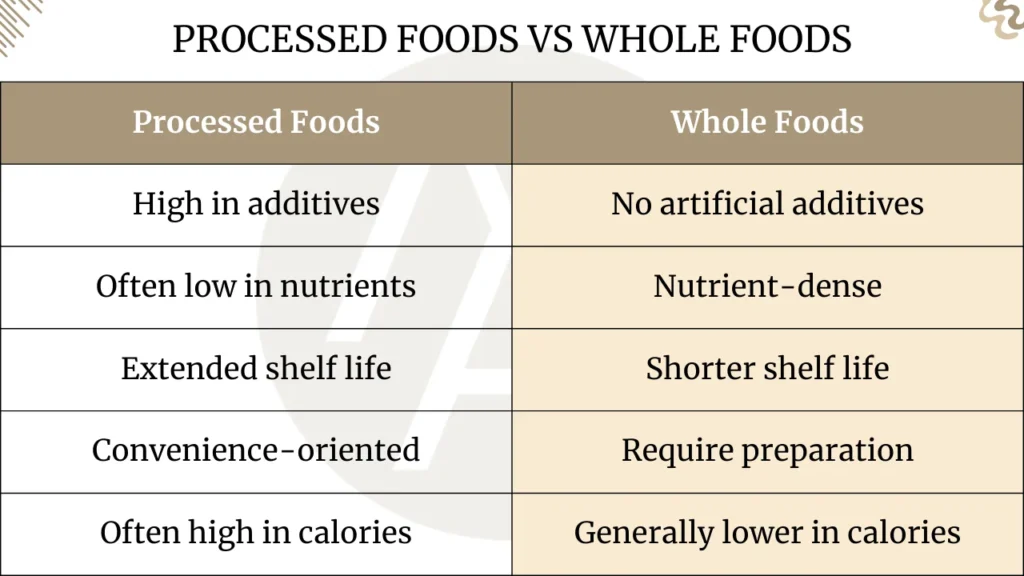
Your modern-day diet contains far more sugar and refined carbohydrates than the diets of your ancestors, and it is resulting in rising health issues like obesity, diabetes, and heart disease. Compared to the whole, unprocessed foods that ancient humans ate, the modern diet is complete with hidden sugars and refined foods that send blood sugar to the moon and create insulin resistance.
Added sugar is prevalent in sodas, sweetened drinks, processed cereals, snacks, condiments, sauces, and desserts. These foods contribute to excess sugar intake, cravings, and metabolic issues. Reducing sugar intake and focusing on whole nutrient-dense foods is the way to better health.
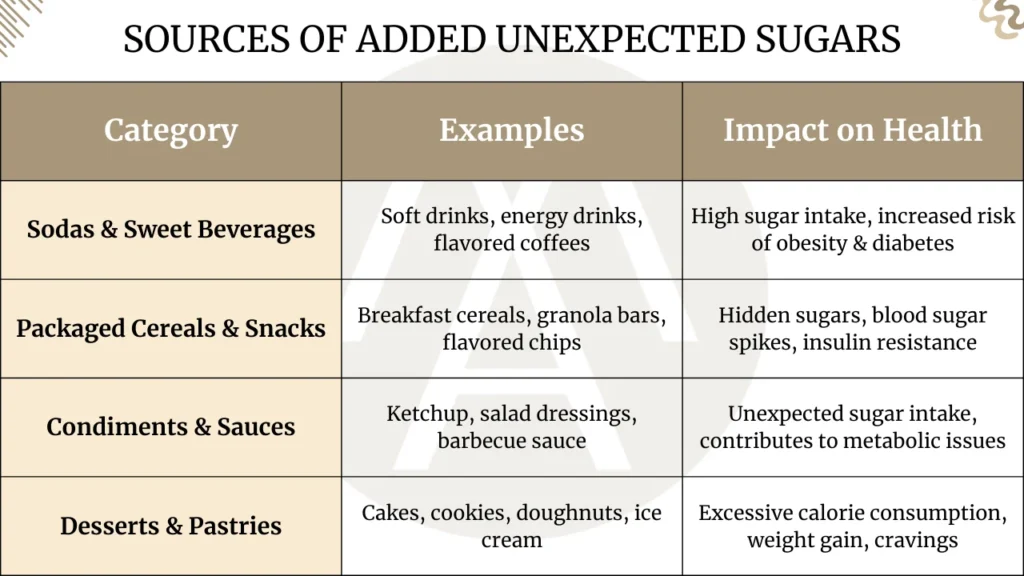
Industrial agricultural methods have transformed food production, increasing bountifulness but concurrently unleashing grave disadvantages. Fruit and vegetable nutritional qualities have suffered due to soil degradation and selective yield breeding, leading to a lower quality of nutrient composition.
Additionally, extensive use of toxic pesticides and herbicides is risky for human health as well as to the environment1.
Acute pesticide poisoning is a widespread global issue, especially in developing countries, with an estimated 1 million serious unintentional cases and 25 million agricultural workers affected annually.2
Besides, the activities have led to severe environmental degradation, including soil erosion, water pollution, and loss of biodiversity.
With today’s busy urban life, convenience has become the rule of food choice, with people choosing the easy option in exchange for their health. This has led to the rise in fast food consumption, as most people are likely to grab burgers, fries, and other fast, calorie-rich foods because they are handy and easy to obtain.
The ORISCAV-LUX study revealed3 that higher intake of prepared meals is linked with higher energy intake, poor adherence to nutritional guidelines, and higher risk of abdominal obesity. These meals are high in sodium, unhealthy fats, and preservatives, resulting in dietary imbalance. Busy lifestyles making home cooking difficult, most individuals end up eating these convenience foods, further reducing their fresh, nutrient-dense food intake. This is particularly prevalent in people with less time and less education. Source
This has consequently resulted in a higher intake of foods rich in calories but lacking in nutrients, thereby increasing diet-related diseases such as obesity, heart disease, and diabetes.

The modern diet has seen a dramatic shift towards processed foods, leading to numerous health issues. You might be surprised to learn that processed foods now make up about 60% of the average American’s diet. This shift has far-reaching consequences for your health and well-being.
The modern diet, heavy on processed food and light on fiber, can play a negative role on gut health. A lack of dietary fiber starves healthy gut bacteria of the nutrients needed for survival, creating an imbalance of the microbiome4.
Furthermore, artificial additives, preservatives, and emulsifiers present in processed foods may interfere with gut bacteria to result in inflammation and impair immune function.
Decline in gut health can also reduce nutrient absorption, leading to deficiencies and increased vulnerability to gastrointestinal disorders such as leaky gut syndrome and irritable bowel syndrome (IBS).
You’ve likely heard of the dangers of excess sugar, but do you know what it does to your metabolism? Refined carbs and added sugars in the modern diet can:
These metabolic disruptions have the ability to cause chronic illnesses like type 2 diabetes and obesity5.
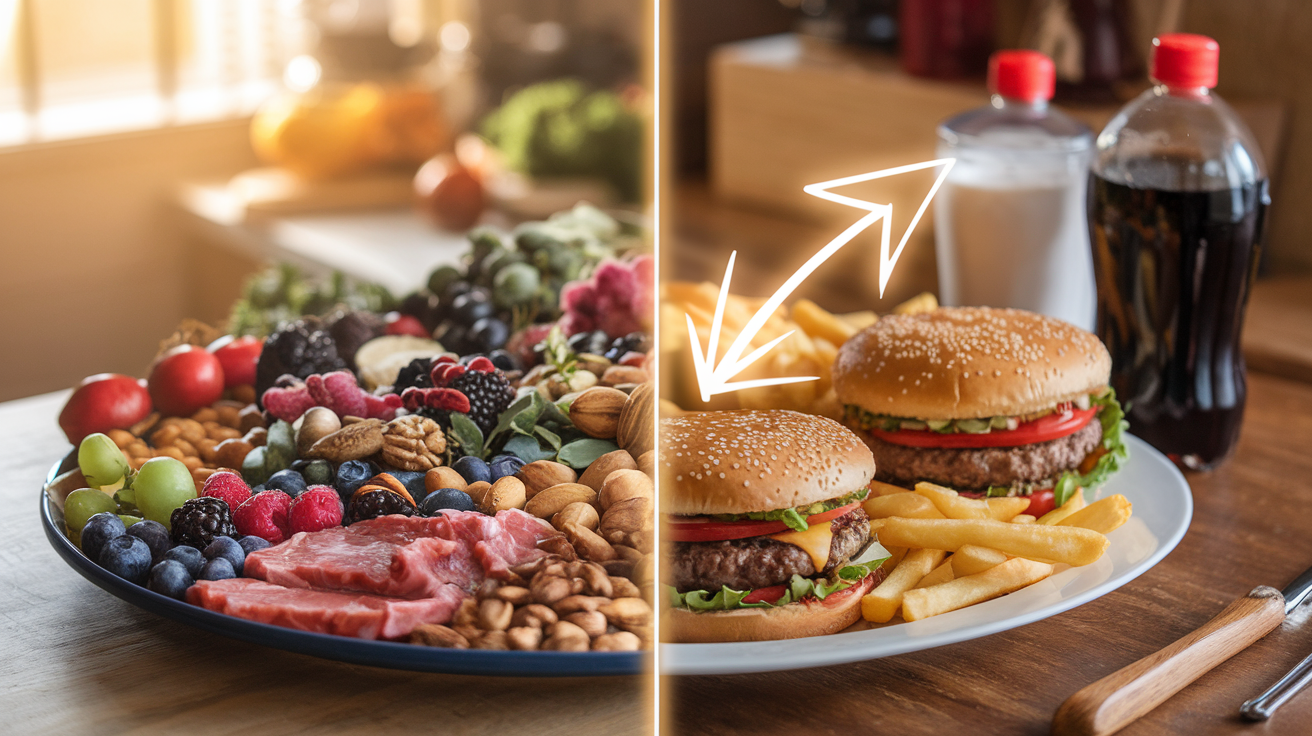
You’ll find that the cornerstone of diets long ago is whole, unprocessed foods. Whole foods are the natural foods with an abundance of nutrients your body requires. Unlike today’s processed foods, whole foods retain their original nutrient levels, giving you:
Choosing grass-fed, pasture-raised, and free-range animal foods has ethical as well as health benefits. Such production practices not only guarantee better animal welfare, but are also beneficial for the nutritional quality of the foods.
Including fermented foods in your diet can do a great deal of good for your gut health by introducing good probiotics that aid digestion and overall well-being. Probiotic foods help:
Common fermented foods like yogurt, kefir, kimchi, sauerkraut, miso, and kombucha are wonderful to have as part of a gut-friendly diet.
The introduction of grains into our diet marked a significant shift from our ancestral eating patterns. This change has had profound effects on human nutrition and health. Let’s examine the timeline of grain consumption:
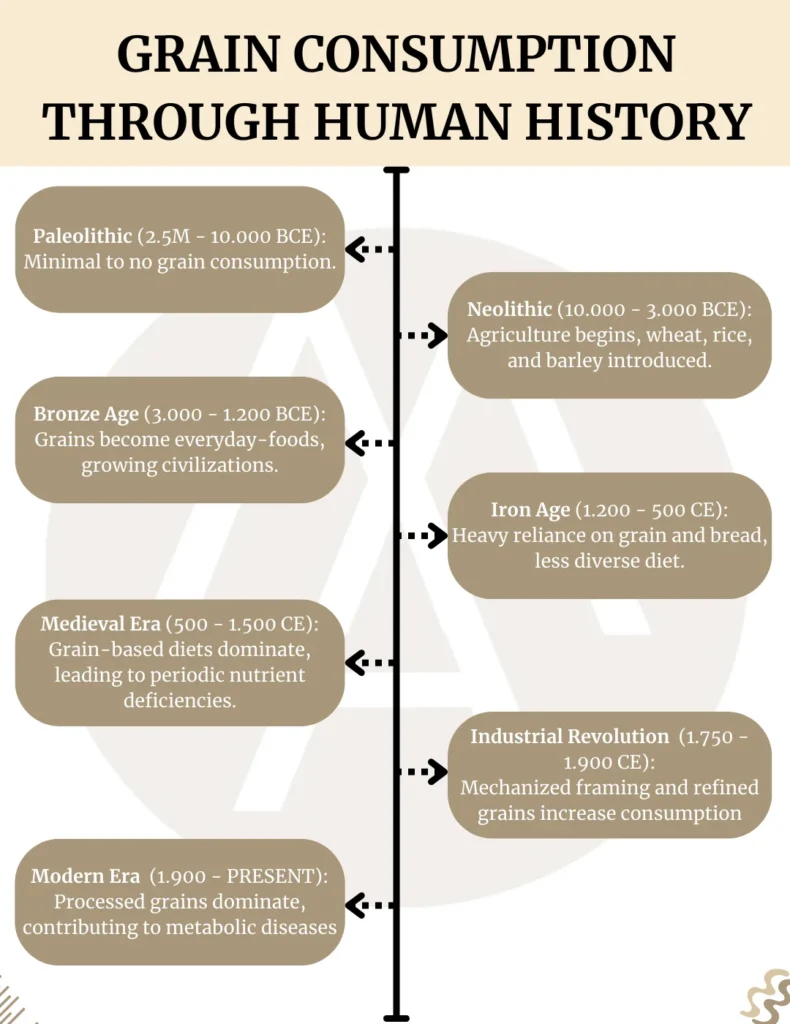
Grains are now an absolute in today’s diet, but their nutrient content is vastly different from what our ancestors consumed. Some of the most significant impacts are as follows:
Gluten is perhaps one of the most controversial aspects of grain consumption. This protein found in wheat, barley, and rye can cause a range of health issues in some people:
As information circulates about the potential pitfalls of grain consumption, grain-free or grain-limited diets are favored by many. These diets will usually focus on:
Now that you have an idea of what grains contribute to our diet, it is important to research the scientific evidence supporting the Palaeolithic diet as a potential alternative.
Recent scientific studies have demonstrated the potential health benefits of the Paleolithic diet. A 2021 meta-analysis study9 published in the journal Nutrients examined the effects of the Paleo diet on various indicators of health, including body composition, lipid profile, blood pressure, and carbohydrate metabolism. The findings revealed significant improvements:
| Metric | Improvement |
|---|---|
| Blood Pressure | -3.4 mmHg |
| Total Cholesterol | -0.8 mmol/L |
| Insulin Sensitivity | +45% |
These results suggest that adopting ancestral eating principles can lead to rapid improvements in cardiovascular health markers.
Research has also indicated long-term benefits of eating a Paleolithic-type diet, including the sustenance of lost weight, as multiple studies have demonstrated its effectiveness in reducing body fat in the long run10.
The diet’s focus on whole foods and the exclusion of grains can also reduce inflammation, leading to more efficient gut health and digestion.
Also, the protein and fat focus allows for more stable blood sugars, which could be beneficial for those with insulin sensitivity or metabolic problems.
Fresh research continues to support the impact of the Paleolithic diet on many health markers. In a 2019 systematic review and meta-analysis published in Advances in Nutrition, the effect of a Paleolithic diet on cardiovascular disease risk markers was examined11.
The meta-analysis included eight randomized controlled trials and concluded that individuals on a Paleolithic diet showed significant improvement in a variety of areas:
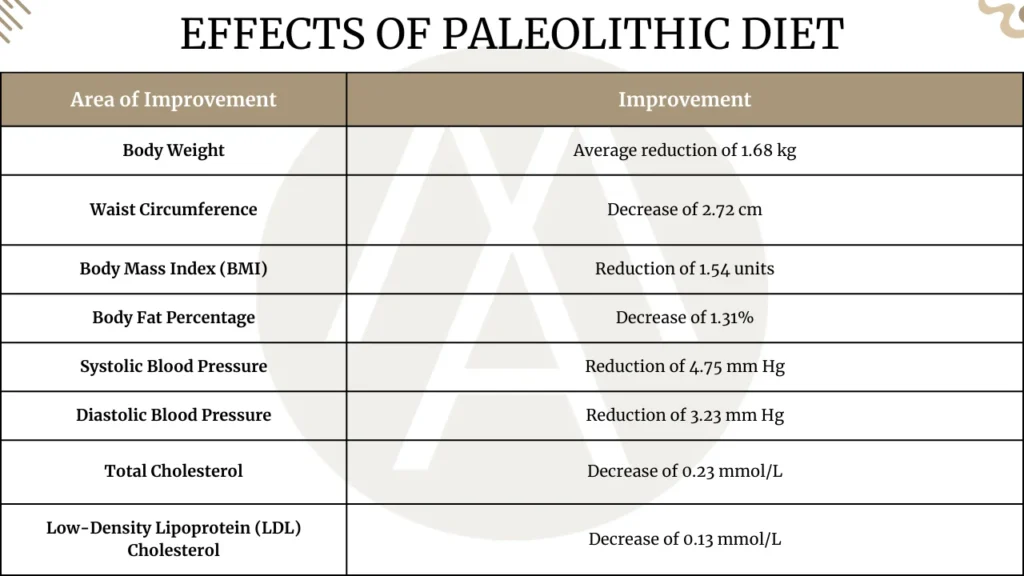

You can start to apply ancestral principles to your modern life by focusing on whole foods. Whole foods are foods that are minimally processed and have no additives. By focusing on whole foods, you’ll fill your body with nutrients in their most natural, bioavailable form, rather than the processed crap you see nowadays.
Here is a comparison of whole foods versus processed foods:
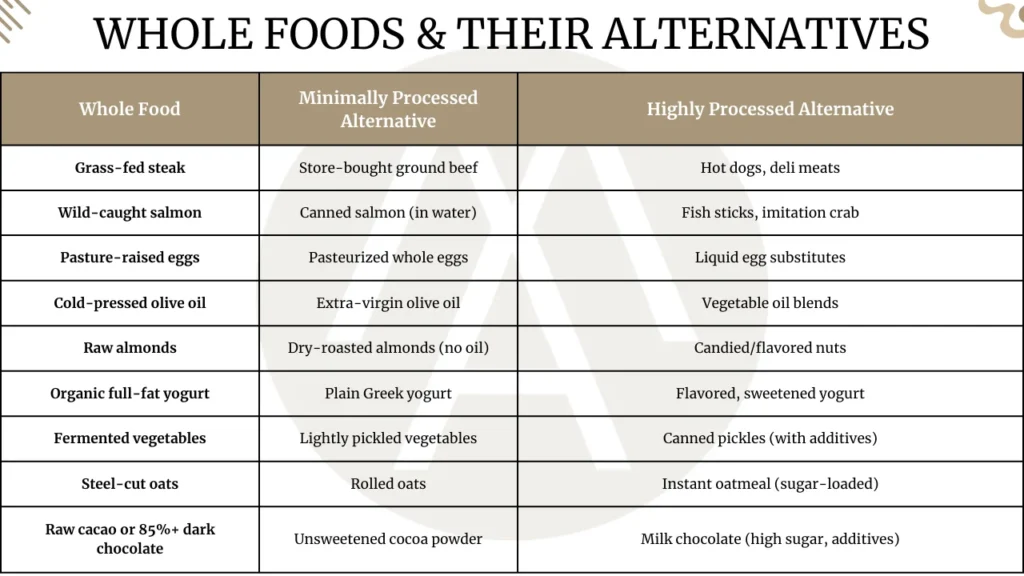
Next, gradually reduce consumption of processed food. These will contain added sugars, unhealthy fats, and synthetic additives that our ancestors never exposed themselves to.
To avoided feeling overwhelmed, start by:
Our ancestors ate an enormous variety of plant foods, and this provided them with an enormous variety of nutrients and beneficial compounds. You can diversify your plant consumption by:
Finally, adopt mindful eating from ancient wisdom. These are practices of being with your food, eating slowly, and listening to your body’s cues of hunger and fullness. Try these practices:

The transition from our ancestor’s diets to today’s dining habits has been a roller coaster ride—one loaded with convenience foods, processed chemicals, and poor health outcomes. But now that you know what our ancestors had to survive and thrive on nutrient-dense foods, you now have the capability to take your health back.
By making the simple changes—leaving processed rubbish behind, whole foods on board, and tuning in to what you eat—you can tap into the strength of your ancient heritage.
Don’t panic, you don’t have to turn full-on caveman overnight. Small, daily changes will add up to big results.
So, are you ready to feed your body the way nature designed? Your choice.